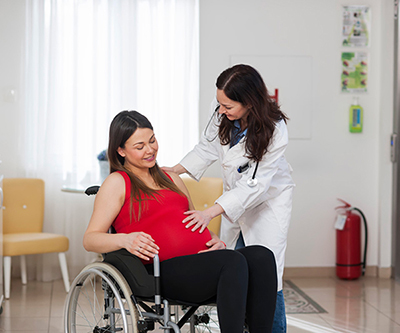
Pregnant women in the United States can face a range of health complications that are exacerbated by race and ethnicity, geography, and age. Less is known about health risks and outcomes for pregnant women with disabilities, especially their risk for maternal death (i.e., maternal mortality) and life-threatening pregnancy complications (i.e., severe maternal morbidity) that can lead to long-term health problems.
Researchers from the Epidemiology Branch evaluated more than 223,000 deliveries in 19 U.S. hospitals and found that roughly 2,199 women had a disability. Disabilities included physical (affecting mobility, physical capacity, or dexterity), sensory (affecting sight, hearing, taste, touch, and smell), or intellectual.
Compared to women without disabilities, women with disabilities had much higher risk for severe pregnancy-related complications and maternal death compared to other pregnant women. For example, pregnant women with disabilities had:
- more than twice the risk for severe preeclampsia (a potentially life-threatening hypertensive disorder of pregnancy)
- 48% higher risk for mild preeclampsia
- 25% higher risk for gestational diabetes
- 52% higher risk for placenta previa (when the placenta covers all or part of the cervix)
- 16% higher risk for premature rupture of the membranes
- 27% higher risk for hemorrhage
- 11 times the risk for maternal death
- more than six times the risk for thromboembolism (blood clots in the lungs or veins in the legs)
- four times the risk for cardiovascular events (heart attacks and other disorders of the heart and blood vessels)
- nearly three times the risk for infection
- 33% greater likelihood of having a delivery with forceps, a vacuum, or other devices to extract the fetus; or to have a cesarean delivery.
The study team noted that women with disabilities are more likely to live in poverty, which may make accessing health care in a timely manner difficult. Those with physical disabilities also may have difficulty accessing health care facilities. Additional research is needed to understand the reasons for these increased risks and to develop interventions to reduce them.
Learn more about the Division of Population Health Research (DiPHR): https://www.nichd.nih.gov/about/org/dir/dph.
 BACK TO TOP
BACK TO TOP